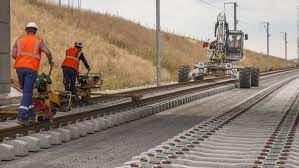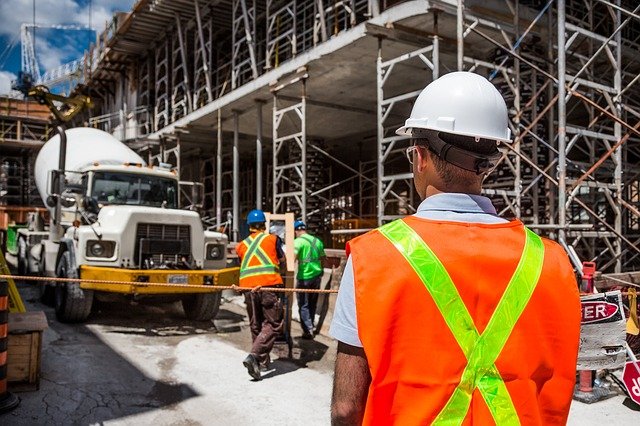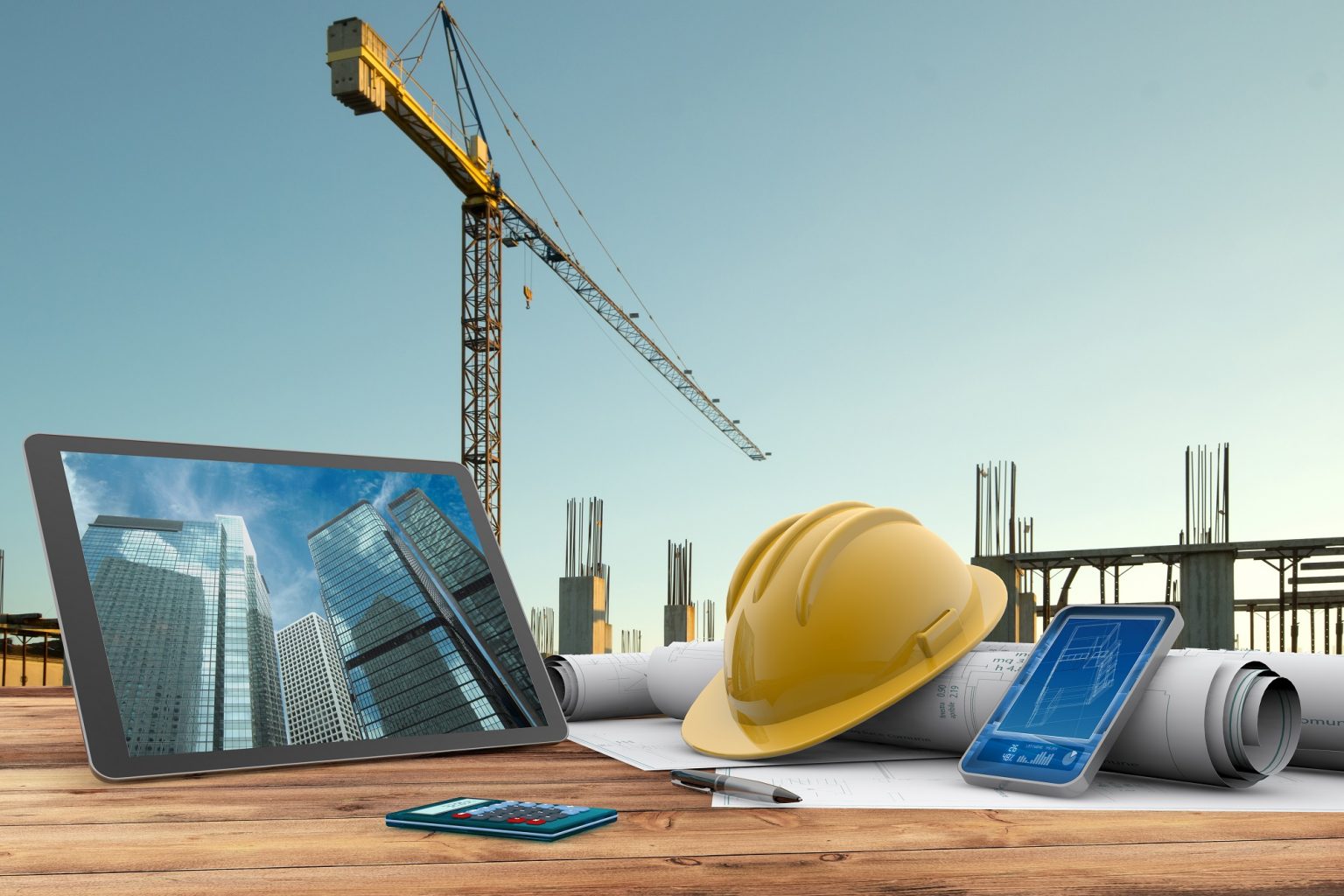Bridging the Gap: How Technology Can Help Solve Construction Industry Challenges
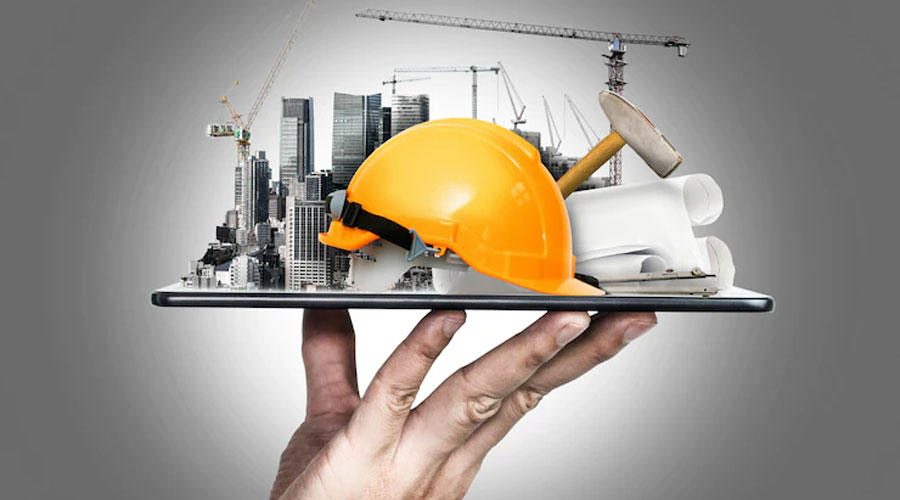
Solving Longstanding Challenges in the Construction Industry through Embracing Technology
Solving Longstanding Challenges in the Construction Industry through Embracing Technology
As with any industry, the construction sector faces a multitude of challenges that can impact its success. These obstacles range from financial struggles and personnel issues to industry-specific hurdles. For decades, the construction industry has grappled with these challenges without finding effective solutions. However, by embracing the latest technological innovations, it’s possible to overcome these longstanding obstacles and usher in a new era of success and growth.
“Overcoming Longstanding Challenges in the Construction Industry with Technology Adoption”
Challenges in the Construction Industry
One of the major challenges that the construction industry faces is financial hardships. Construction projects often require significant investment, and any delays or cost overruns can have a severe impact on a company’s bottom line. Additionally, economic downturns and market fluctuations can create significant financial challenges for construction companies, making it difficult to maintain profitability and sustain growth.
Another significant challenge in the construction industry is managing personnel. Hiring and retaining skilled workers can be a challenge, especially in areas where the labor market is competitive. Additionally, safety concerns are always a top priority on construction sites, and managing safety protocols and compliance can be a daunting task.
Finally, there are industry-specific challenges that the construction sector must overcome, such as the need to adapt to changing regulations, evolving technologies, and shifting customer demands. Failure to adapt to these changes can result in decreased competitiveness and market share.
The Role of Technology in Overcoming Challenges
Technology can play a crucial role in overcoming the challenges faced by the construction industry. By adopting the latest technological solutions, companies can streamline their operations, reduce costs, and improve safety and productivity. Additionally, technology can help construction companies stay competitive by allowing them to adapt to changing market conditions and customer demands.
One example of technology that can benefit the construction industry is building information modeling (BIM). BIM is a digital representation of a building that allows construction companies to plan and manage projects more efficiently. By using BIM, construction companies can identify and address potential issues before they arise, reducing the risk of costly delays and rework. BIM can also improve communication and collaboration among project stakeholders, leading to more successful outcomes.
Another technology that can benefit the construction industry is drone technology. Drones can be used to inspect job sites, monitor progress, and identify potential safety hazards. Drones can also provide real-time data and insights that can help construction companies make informed decisions about project management and resource allocation.
The challenges facing the construction industry have been longstanding and complex. However, by embracing the latest technological innovations, companies can overcome these challenges and achieve new levels of success and growth. The adoption of technologies such as BIM and drones can streamline operations, improve safety and productivity, and allow construction companies to adapt to changing market conditions. As the construction industry continues to evolve, technology will undoubtedly play an increasingly important role in its success.
Overcoming the Challenge of Rising Material Costs in Construction
One of the biggest challenges that construction companies face today is the rising cost of materials. The fluctuating prices of raw materials can create major issues for construction projects, especially for smaller companies with low profit margins. Fortunately, technological applications can provide a solution to this problem. By using software that can filter information based on specific criteria, construction companies can identify suppliers that meet their needs in terms of price, quality, and location. This saves time and resources during the procurement phase and allows for a quicker start to the project.
The Challenge of Rising Material Costs
The pricing of raw materials in the construction industry is subject to constant fluctuations, which can create significant challenges for construction companies. The cost of materials, such as lumber, steel, and concrete, can impact the profitability of a project, especially when prices rise unexpectedly. Smaller construction companies with limited resources may find it difficult to cope with these price increases, which can put their projects at risk.
Technological Solutions to Overcome the Challenge
To overcome the challenge of rising material costs, construction companies can turn to technological solutions. One such solution is the use of software that can filter information based on specific criteria, such as price, quality, and location of suppliers. This allows construction companies to identify suppliers that meet their needs and budgets more efficiently.
In addition, technology can also help construction companies manage their inventory more effectively. By using inventory management software, companies can track their supplies and materials, monitor usage rates, and identify potential shortages. This enables them to order materials in a timely manner, reducing the risk of delays and cost overruns.
Benefits of Technological Solutions
The use of technology to overcome the challenge of rising material costs offers several benefits to construction companies. By identifying suppliers that offer the best prices, companies can reduce their procurement costs, which can have a significant impact on the profitability of a project. The use of inventory management software also reduces the risk of delays and cost overruns, which can improve project outcomes and customer satisfaction.
In conclusion, the rising cost of materials is a significant challenge for construction companies, particularly smaller companies with low profit margins. However, by embracing technological solutions, such as software that can filter information based on specific criteria and inventory management software, construction companies can overcome this challenge and improve project outcomes. By reducing procurement costs and improving inventory management, construction companies can improve their profitability and competitiveness in a challenging market.
How Technology Can Help Construction Companies Overcome Poor Cash Flow Management
Cash flow management is a crucial aspect of any business, and construction companies are no exception. Unfortunately, poor cash flow management is a common problem in the construction industry, with 84% of firms reporting difficulties in this area, and 19% citing it as a recurring issue. Slow, late, or partial payments can create serious cash flow problems for construction businesses, and addressing these issues is essential for long-term success.
The Impact of Poor Cash Flow Management
Late payments are a significant issue for construction companies, with payment periods averaging up to 83 days according to PWC. This can create significant cash flow issues, especially for smaller firms. When payments are late or incomplete, construction companies may struggle to pay their suppliers, cover their operating expenses, and make payroll. This can lead to delays in projects and potential legal disputes.
Technological Solutions to Improve Cash Flow Management
Fortunately, technology can help construction companies address the issue of poor cash flow management. One solution is to implement a construction management system that can automate and optimize billing and expenses. Software such as Contract365 .NET ERP solution can help track and monitor cash flow, allowing construction companies to manage their finances more effectively.
By automating billing and expenses, construction companies can reduce errors and improve accuracy, which can reduce the risk of late payments or incomplete payments. This can improve cash flow and reduce the risk of financial problems.
Benefits of Technological Solutions
Implementing technology solutions such as a construction management system can have several benefits for construction companies. By improving cash flow management, companies can reduce the risk of financial problems, improve project outcomes, and maintain good relationships with suppliers and customers. Improved cash flow can also provide companies with more resources to invest in new projects and growth opportunities.
In conclusion, poor cash flow management is a significant problem for construction companies, but technology can offer solutions. By implementing a construction management system, construction companies can automate and optimize billing and expenses, improving accuracy and reducing the risk of late or incomplete payments. This can help to improve cash flow and provide companies with the resources they need to succeed in a competitive market.
How Technology Can Improve Collaboration in the Construction Industry
Collaboration is essential in the construction industry, as it allows project teams to work together effectively and complete projects on time. Unfortunately, a lack of collaboration can cause delays and problems, particularly if there is poor communication between stakeholders. This can lead to misunderstandings, rework, and other issues that can affect project outcomes.
Challenges of Collaboration in Construction
In the construction industry, collaboration is critical for success, but it can be challenging to achieve. Project teams may include owners, main contractors, sub-contractors, suppliers, and on-site workers, each with their own unique responsibilities and priorities. Coordinating these different groups can be difficult, and it can be challenging to ensure that everyone is working together effectively.
The Role of Technology in Collaboration

Fortunately, technology can help improve collaboration in the construction industry. For example, project management software can be used to streamline communication and provide real-time updates on project progress. Cloud-based collaboration tools can also be used to share information and documents in a centralized location, making it easier for teams to work together and stay on the same page.
Benefits of Technological Solutions
By using technology to improve collaboration, construction companies can improve project outcomes and reduce the risk of delays and problems. Collaboration tools can help to ensure that all project stakeholders have access to the information they need to complete their work, reducing the risk of misunderstandings or errors. This can lead to improved efficiency, increased productivity, and a better overall project outcome.
In conclusion, collaboration is essential in the construction industry, but it can be challenging to achieve. By using technology solutions such as project management software and cloud-based collaboration tools, construction companies can improve communication and coordination between stakeholders, reducing the risk of delays and improving project outcomes. By embracing technology, construction companies can work more effectively as a team, delivering projects on time and to a high standard.
HOW UNRELIABLE SUBCONTRACTING CAN AFFECT YOUR CONSTRUCTION PROJECT
Construction projects involve the collaboration of different parties working together to achieve a common goal. However, when a piece of the puzzle does not fit in as expected, it can lead to several issues that may affect the success of the project. One of the problems that construction projects commonly face is the practice of subcontractors subletting their work to other subcontractors, also known as multilayer subcontracting. In this article, we’ll explore the issues that may arise from unreliable subcontracting and how it can impact the performance of your project.
Unreliable Subcontracting and Its Implications
When a subcontractor sublets their work to a third party, the main contractor loses control over the quality and standards of the work being delivered. In most cases, the main contractor has no idea about the qualifications, expertise, and experience of the third party involved. This can lead to significant risks for the project, such as substandard work, missed deadlines, and cost overruns. Additionally, the main contractor may also face legal liabilities if the work delivered by the third party does not meet the client’s expectations or project specifications.
The Need for Profiling and Compliance Management
To avoid the risks associated with unreliable subcontracting, it’s crucial to have a strict policy in place to manage the profiling and compliance of all parties involved in the project. By implementing a robust compliance management system, you can ensure that all subcontractors and third parties meet the necessary qualifications, standards, and criteria required for the project.
Profiling involves assessing the qualifications, capabilities, and experience of each subcontractor and third party involved in the project. This process allows the main contractor to identify potential risks and evaluate the subcontractors’ ability to deliver the work as per the project specifications. It’s essential to verify the subcontractors’ licenses, certifications, and insurance coverage before engaging them in the project.
Compliance management involves implementing a set of rules, regulations, and standards that all parties involved in the project must comply with. This ensures that the work delivered by the subcontractors meets the required quality, safety, and performance standards. It’s crucial to establish clear communication channels and reporting procedures to ensure that all parties involved in the project comply with the compliance management system.
Unreliable subcontracting can lead to significant risks and issues that may affect the performance and success of your construction project. By implementing a strict policy for profiling and compliance management, you can ensure that all parties involved in the project meet the necessary qualifications, standards, and criteria required for the project. This will help elevate the levels of the project performance and ensure that the work delivered meets the required quality, safety, and performance standards.
EMBRACING TECHNOLOGICAL CHANGE IN THE CONSTRUCTION INDUSTRY
The construction industry is notorious for being slow to adopt new technologies, preferring instead to stick to traditional methods. However, in today’s rapidly evolving landscape, it’s essential that construction businesses keep up with the latest technological trends and innovations to remain competitive. In this article, we’ll discuss the resistance to change in the construction industry and the benefits of embracing new technologies.
Resistance to Change in the Construction Industry
One of the most significant challenges facing the construction industry is the resistance to change. Many contractors are reluctant to embrace new technologies, even when it’s clear that it could streamline their processes and improve their bottom line. The industry has been slow to digitize, which means that many construction companies are still using paper-based systems for tracking time, labor, and other essential data. This can lead to errors, inefficiencies, and increased costs.
Benefits of Embracing New Technologies
There are many benefits to embracing new technologies in the construction industry. Digitization can remove the tedious and complex data entry work from workers, allowing them to focus on more critical tasks. By using a simplified timesheet, workers can work more efficiently, saving time and reducing costs. Additionally, new technologies such as smart construction software, 3D scanning and printing, Building Information Modelling (BIM), autonomous equipment, drone technology, and AR/VR are becoming widely practiced in construction, offering new ways to reduce costs and risks.
Reducing Construction Risks and Costs
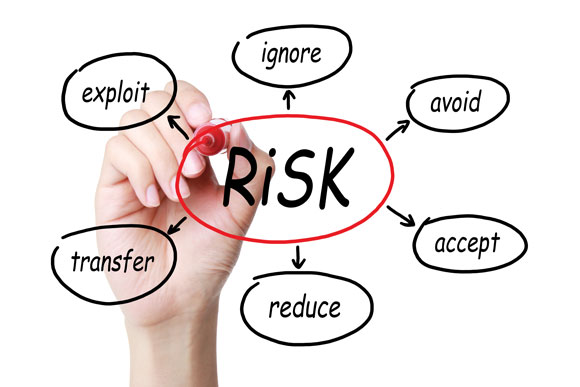
Reducing Construction Risks and Cost
The adoption of new technologies in the construction industry can revolutionize how the industry operates as a whole. By leveraging these technologies, contractors can reduce construction risks and costs, allowing them to complete projects on time and within budget. For example, BIM can provide a 3D model of the building, allowing contractors to identify and resolve potential issues before they occur. Drones can be used to survey and inspect construction sites, reducing the need for workers to climb scaffolding or ladders, reducing the risk of accidents. Additionally, autonomous equipment can perform repetitive tasks, reducing the need for human labor and lowering costs.
In conclusion, the construction industry must embrace new technologies to remain competitive and relevant in today’s rapidly evolving landscape. By adopting new technologies, contractors can streamline their processes, reduce costs, and improve the quality of their work. The adoption of new technologies also offers new ways to reduce construction risks, making the construction industry safer for workers and reducing the likelihood of delays or cost overruns. Ultimately, embracing new technologies is essential for the long-term success of the construction industry.
EMBRACING MOBILE TECHNOLOGY IN THE CONSTRUCTION INDUSTRY
In today’s rapidly changing construction industry, staying ahead of the curve is essential. As projects become more sophisticated and new restrictions come into play due to various factors such as the existing environment, it’s crucial that main contractors take the initiative to combat these challenges with the use of the latest mobile technology. In this article, we’ll discuss the benefits of embracing mobile technology in the construction industry.
The Foundation of Any Project
One of the most critical aspects of any construction project is the employees. Without them, the project would not exist. It’s essential to have tools that allow you to keep track of their work and communicate with them effectively. By downloading mobile management tools, contractors can stay connected with their workers at all times. This allows them to stay informed about any unforeseen circumstances and make announcements that keep everyone on the same page.
Combatting Challenges
The construction industry faces many challenges, and mobile technology can help combat these issues. For example, with mobile technology, contractors can quickly and easily access plans and blueprints on-site, reducing the need to carry bulky documents around. This can help increase efficiency and productivity, reducing the likelihood of errors or delays. Mobile technology can also help with safety compliance by providing workers with access to training videos and safety protocols, ensuring that everyone is on the same page when it comes to safety standards.
Accessibility and Flexibility
One of the most significant benefits of mobile technology in the construction industry is accessibility and flexibility. With mobile technology, contractors can access information from anywhere, at any time. This means that they can work remotely, access information on the go, and stay connected with their teams, regardless of their location. This level of flexibility can help increase efficiency and productivity, as well as improve communication between contractors and their workers.
In conclusion, embracing mobile technology in the construction industry is essential for staying ahead of the curve and combatting the challenges faced by the industry. Mobile technology offers a range of benefits, including increased efficiency and productivity, improved communication, and enhanced safety compliance. By using mobile management tools, contractors can stay connected with their workers at all times, ensuring that everyone is on the same page and that the project runs smoothly. Ultimately, mobile technology is paving the way for the future of the construction industry.

